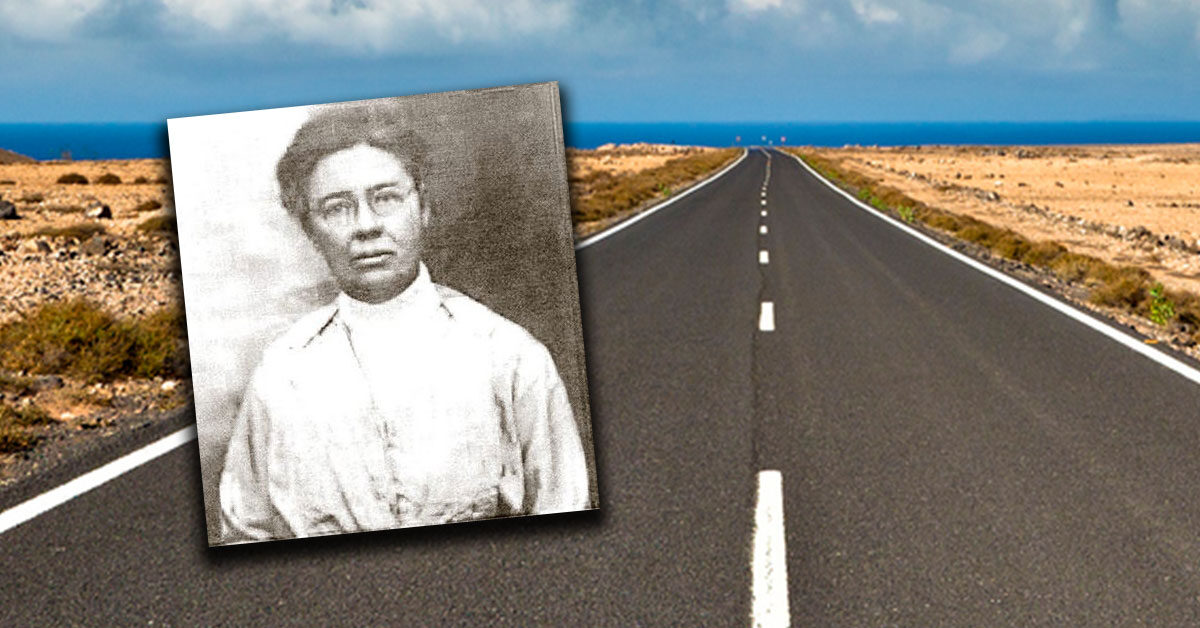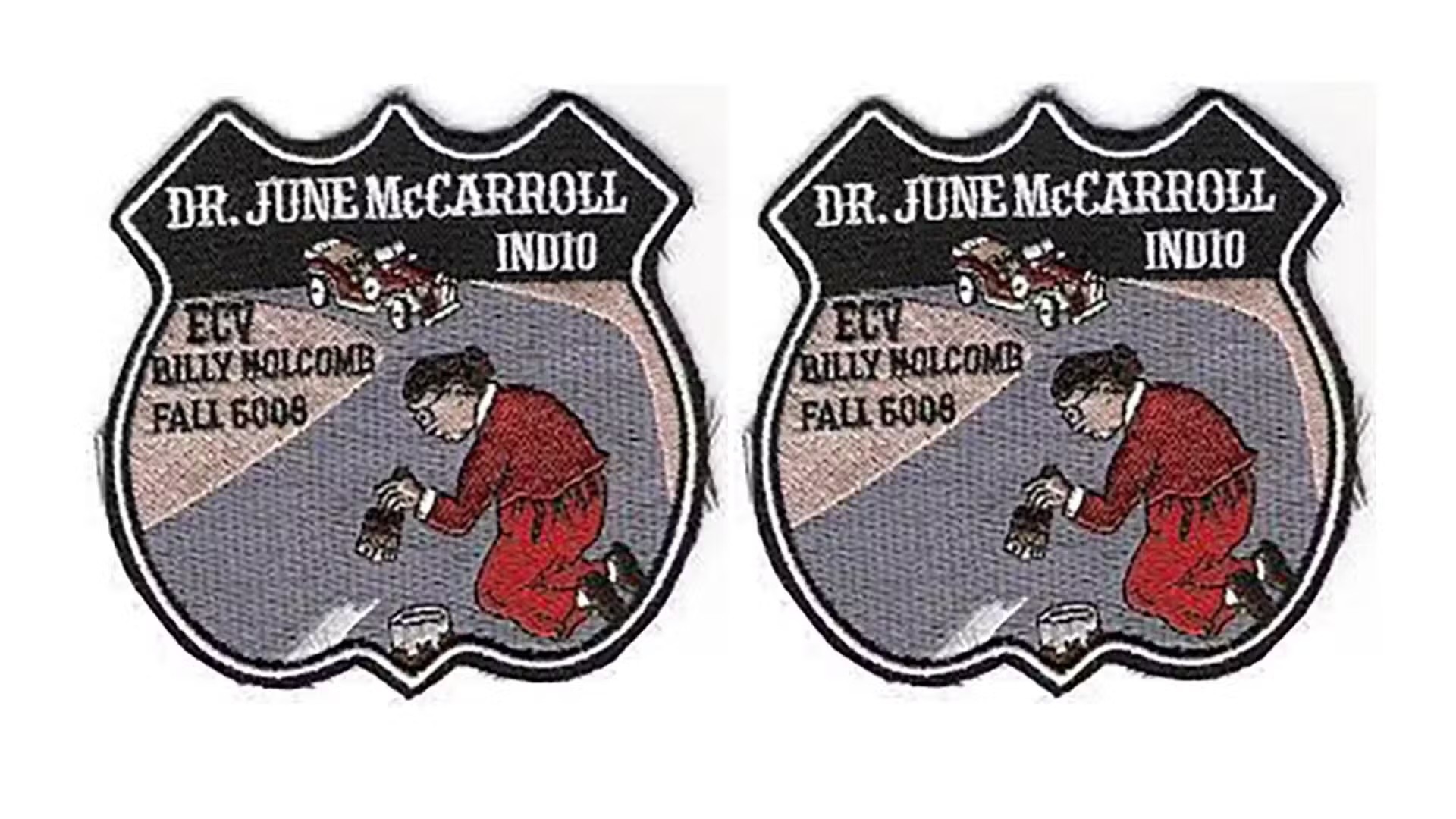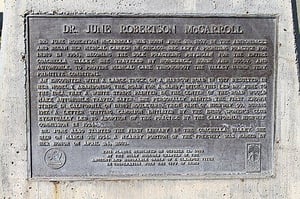
Have you ever wondered where the idea of delineating highways with a painted line to separate lanes of highway traffic? Such a simple concept changed the trajectory of road safety. Here’s the story of its origin.
Doctor June McCarroll was born and raised in the Adirondacks of KY. She attended college in Chicago, a rarity for women then, and received medical training at the Allopathic Medical College, another exceedingly rare accomplishment for women of that era. She served as the physician for the Nebraska State School for two years.
Her Department of Transportation legacy came about while driving her Model T Ford between Indio and Palm Springs. As dusk fell on an autumn day in California in 1917, she rounded a bend and faced a large truck in the opposite direction. Worse still, the truck was using the road and heading straight for her. She was forced off the very narrow concrete highway into the sand. Since the incident occurred at dusk, the truck driver had difficulty telling where his half of the unmarked white concrete road ended, and the white sand shoulder began.
Dr. McCarroll started to think about how such accidents could be prevented. Her medical practice brought her into regular contact with people who had been injured in automobile crashes, which kept the matter fresh in her mind. While on a later trip, Dr. McCarroll noticed a road with a definite middle joint that had been widened from 8 to 16 feet. The pronounced center joint ridge caused cars to stay on their side of the road.
After some thought, she determined that a line down the center of the road might prevent many accidents. Dr. McCarroll realized that a center line painted down the middle of the streets and highways would serve the same purpose as the center joint. She communicated her idea to the Riverside County Board of Supervisors and other jurisdictions but the proposed idea fell on deaf ears.
Finally, in the fall of 1917, armed with only a paint brush and some white paint, she got down on her hands and knees and personally hand-painted a two-mile-long, four-inch-wide white stripe down the middle of Highway 99 (later renamed Highway 86).  Through the Indio Women’s Club and other organizations, Dr. McCarroll launched a vigorous statewide letter-writing campaign to support extending the striping statewide. In November 1924, the California Highway Commission finally adopted the idea, and 3,500 miles of lines were painted throughout California. The California Department of Transportation credits the frontier doctor with originating the center-stripe idea.
Through the Indio Women’s Club and other organizations, Dr. McCarroll launched a vigorous statewide letter-writing campaign to support extending the striping statewide. In November 1924, the California Highway Commission finally adopted the idea, and 3,500 miles of lines were painted throughout California. The California Department of Transportation credits the frontier doctor with originating the center-stripe idea.
On April 24, 2002, California officially designated the stretch “The Doctor June McCarroll Memorial Freeway” to honor her contribution to road safety.
In 2003, a plaque commemorating her endeavors was mounted on a 6-foot-tall pillar, erected at the corner of Smurr Street and Indio Boulevard, where she first got down on her hands and knees, paintbrush in hand.

Edward N. Hines, a member of the Wayne County Road Commission in MI, claimed he had painted line markings down the middle of roads in 1911, while two other men claimed to have painted center lines down two separate roads. One was in MI, and the other was in OR in the summer of 1917, pre-dating Dr. McCarroll’s claim by several weeks. Where Dr. McCarroll differed, though, was her repeated attempts to get various government jurisdictions to adopt the idea, something none of the male claimants tried to do.
“When I gave this idea to an accident-ridden world,” she said in her later years, “it was with no thought of honors, only safety for drivers of automobiles.”
Dr. McCarroll was one of the Imperial and Coachella Valley’s first female doctors. Strapped with a six-shooter, she visited patients by horseback, horse and buggy, railroad handcar, and automobile trips to practice medicine. A testament to her tenacity and impact, she was the only physician officially designated to care for thousands of Cahuilla Indians.
Her industriousness went beyond safety and providing medical care. Dr. McCarroll also provided reading material for her patients; she applied for her home to be a branch of the state library. In September 1905, Dr. McCarroll founded the first library in the Coachella Valley. The library consisted of 50 to 100 volumes that changed every three months.
With Dr. McCarroll ideas sprang colors, stripes, and other markings on streets and highways to enhance motoring safety. When Dr. McCarroll died in 1954, at 86, striping highways was commonplace nationwide.
Sources
Like this kind of content?
As a member of the Wnbaz, stay on top of emerging trends and business issues impacting transportation and logistics; learn the importance of gender diversity in the workplace and the need for more women drivers; and see best practices in encouraging the employment of women in the trucking industry. Join today! Learn More












